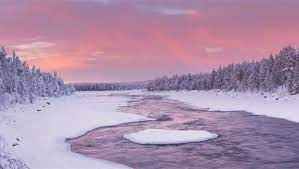Asteroids
"Asteroids: Stepping Stones to the Stars"
An asteroid is a small celestial body that orbits the Sun. It is composed primarily of rock and metal and is much smaller than a planet. Most asteroids are found in the asteroid belt, a region between the orbits of Mars and Jupiter, although they can also exist in other locations in the solar system.
Asteroids come in various sizes, ranging from small boulders to objects several hundred kilometers in diameter. They are remnants from the early stages of our solar system's formation, and studying them can provide insights into the processes that shaped the planets and other celestial bodies.

Asteroids can be classified into different types based on their composition. Some are rocky and metallic, while others contain a significant amount of carbonaceous material. Additionally, some asteroids are classified as "rubble piles" due to their loose and fragmented structures.
Occasionally, asteroids can pose a threat to Earth if their orbits intersect with our planet's path. If a large asteroid were to collide with Earth, it could have catastrophic effects, potentially causing significant damage and global environmental consequences. However, the probability of such an impact occurring in the near future is low, and scientists are actively monitoring asteroids to identify any potential risks and develop strategies for planetary defense.
Space agencies, such as NASA, have conducted missions to study asteroids up close. These missions involve sending spacecraft to rendezvous with asteroids, collect samples, and gather data about their composition, structure, and behavior. Notable missions include NASA's OSIRIS-REx mission to the asteroid Bennu and Japan's Hayabusa2 mission to the asteroid Ryugu.
Studying asteroids is crucial not only for understanding the history and formation of our solar system but also for preparing and protecting our planet from potential asteroid impacts in the future.
An asteroid is a small celestial body that orbits the Sun. It is composed primarily of rock and metal and is much smaller than a planet. Most asteroids are found in the asteroid belt, a region between the orbits of Mars and Jupiter, although they can also exist in other locations in the solar system.
Asteroids come in various sizes, ranging from small boulders to objects several hundred kilometers in diameter. They are remnants from the early stages of our solar system's formation, and studying them can provide insights into the processes that shaped the planets and other celestial bodies.

Asteroids can be classified into different types based on their composition. Some are rocky and metallic, while others contain a significant amount of carbonaceous material. Additionally, some asteroids are classified as "rubble piles" due to their loose and fragmented structures.
Occasionally, asteroids can pose a threat to Earth if their orbits intersect with our planet's path. If a large asteroid were to collide with Earth, it could have catastrophic effects, potentially causing significant damage and global environmental consequences. However, the probability of such an impact occurring in the near future is low, and scientists are actively monitoring asteroids to identify any potential risks and develop strategies for planetary defense.
Space agencies, such as NASA, have conducted missions to study asteroids up close. These missions involve sending spacecraft to rendezvous with asteroids, collect samples, and gather data about their composition, structure, and behavior. Notable missions include NASA's OSIRIS-REx mission to the asteroid Bennu and Japan's Hayabusa2 mission to the asteroid Ryugu.
Studying asteroids is crucial not only for understanding the history and formation of our solar system but also for preparing and protecting our planet from potential asteroid impacts in the future.
#Asteroid
#SpaceRock
#AsteroidBelt
#AsteroidMission
#NASA
#SpaceExploration
#Astronomy
#AsteroidResearch
#PlanetaryDefense
#SpaceScience
#AsteroidImpact
#AsteroidMining
#AsteroidSampleReturn
#NEO (Near-Earth Object)
#SpaceDiscovery
#AsteroidWatch
#SpaceMission
#AsteroidScience
#AsteroidAwareness
#AsteroidDeflection
#SpaceRock
#AsteroidBelt
#AsteroidMission
#NASA
#SpaceExploration
#Astronomy
#AsteroidResearch
#PlanetaryDefense
#SpaceScience
#AsteroidImpact
#AsteroidMining
#AsteroidSampleReturn
#NEO (Near-Earth Object)
#SpaceDiscovery
#AsteroidWatch
#SpaceMission
#AsteroidScience
#AsteroidAwareness
#AsteroidDeflection
Facebook: https://www.facebook.com/profile.phpid=100087106114908
Twitter : https://twitter.com/bestpaperaward
Pinterest : https://in.pinterest.com/bestpaperaward
Linkedin : https://www.linkedin.com/in/esha-gupta-18b2b4245
Instagram: https://www.instagram.com/eshagupta__2022/
Twitter : https://twitter.com/bestpaperaward
Pinterest : https://in.pinterest.com/bestpaperaward
Linkedin : https://www.linkedin.com/in/esha-gupta-18b2b4245
Instagram: https://www.instagram.com/eshagupta__2022/


Comments
Post a Comment